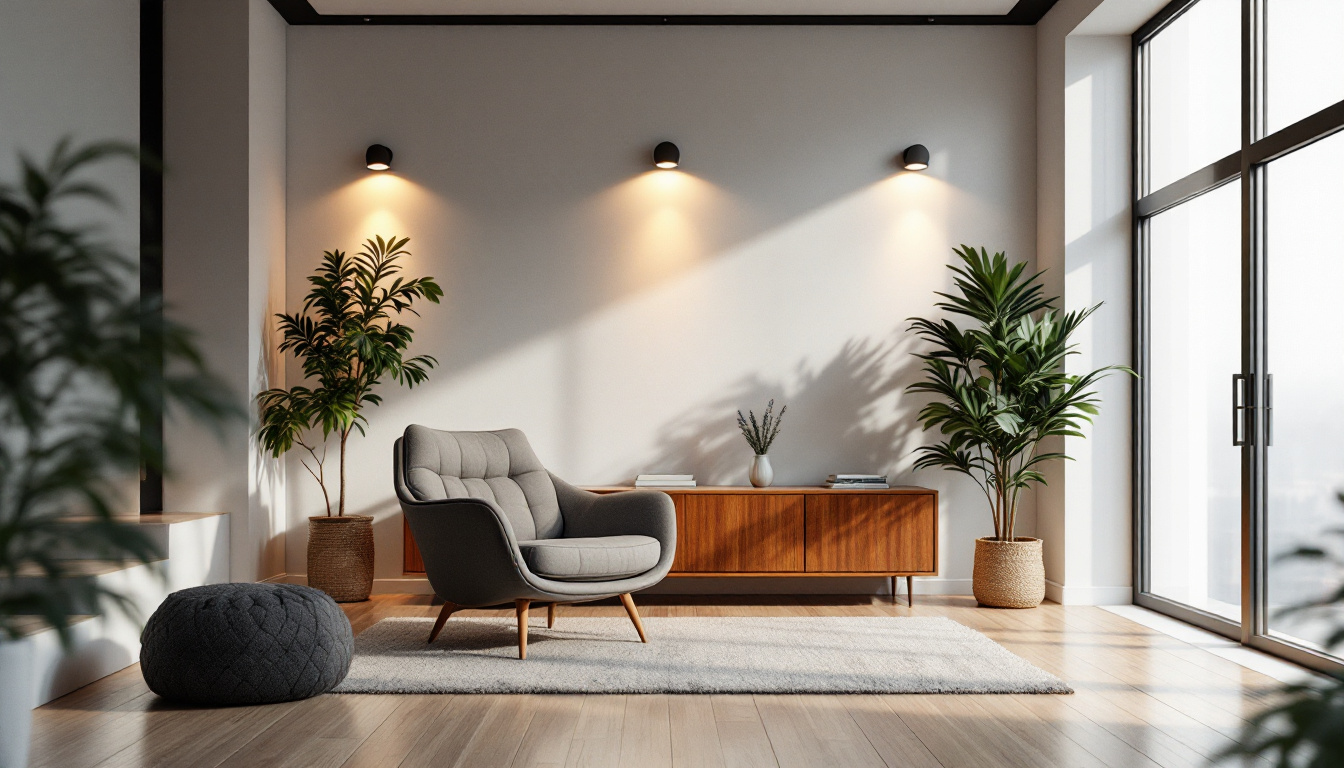
When it comes to illuminating spaces, small pot lights have gained immense popularity among lighting contractors and homeowners alike. These compact fixtures not only provide focused lighting but also add a modern touch to any room. However, despite their advantages, there are common pitfalls that can lead to costly mistakes during lighting projects. This article aims to guide lighting contractors in navigating these challenges, ensuring successful installations that meet both aesthetic and functional requirements.
Before diving into the intricacies of installation and design, it’s essential to grasp the fundamental aspects of small pot lights. These fixtures, often referred to as recessed lights or downlights, are installed into the ceiling, creating a sleek and unobtrusive lighting solution. Their design not only saves space but also provides a clean aesthetic that can seamlessly blend into any interior. With the right placement, small pot lights can transform a room, enhancing its functionality while maintaining a sophisticated look.
Small pot lights come in various types, each suited for different applications. The most common types include adjustable, fixed, and wall-wash pot lights. Adjustable pot lights allow for directional lighting, making them ideal for highlighting artwork or architectural features. Fixed pot lights provide a consistent beam of light, perfect for general illumination. Wall-wash pot lights, on the other hand, are designed to cast light evenly across walls, enhancing the ambiance of a room. Additionally, there are also specialized pot lights, such as those designed for outdoor use, which are built to withstand the elements while providing effective illumination for pathways and gardens.
The size and style of small pot lights can significantly impact the overall look and feel of a space. It is crucial to consider the dimensions of the room and the height of the ceiling when selecting fixtures. A common mistake is choosing lights that are either too small or too large for the intended area, which can disrupt the visual balance. Additionally, selecting a style that complements the existing décor is vital; modern, minimalist designs may not suit a traditional setting, and vice versa. Beyond aesthetics, it’s also worth considering the color temperature of the bulbs used in pot lights. Warmer tones can create a cozy atmosphere, while cooler tones can lend a more modern and energetic vibe, influencing how the space feels and functions.
Another important factor to consider is the installation process and the type of housing used for the pot lights. New construction and remodel housing options are available, each catering to different installation scenarios. For instance, remodel housings are designed for existing ceilings, allowing for easy installation without the need for extensive renovations. Furthermore, the choice of dimmable versus non-dimmable fixtures can greatly enhance the versatility of your lighting scheme, enabling you to adjust the mood of the room according to the occasion. By thoughtfully selecting the right type, size, and style of small pot lights, you can create a beautifully illuminated space that meets both your functional and aesthetic needs.
A well-thought-out lighting layout is key to avoiding costly mistakes in lighting projects. Proper planning ensures that the lights are evenly distributed and effectively illuminate the intended areas.
Before installation, creating a detailed lighting plan is essential. This plan should outline the placement of each pot light, taking into account the room’s function, furniture layout, and any architectural features. For instance, in a kitchen, it may be beneficial to place lights above work areas, while in a living room, a more ambient approach may be preferred. Using design software or simple sketches can help visualize the layout and make necessary adjustments before installation.
One of the most critical aspects of a lighting plan is determining the correct spacing between pot lights. A common guideline is to space them approximately 4 to 6 feet apart, but this can vary based on the brightness of the bulbs and the desired effect. Overcrowding lights can lead to harsh shadows and an uninviting atmosphere, while too much space can leave areas inadequately lit. It’s essential to strike a balance that caters to the specific needs of the space.
The type of bulb used in small pot lights can dramatically affect both the quality of light and energy efficiency. Selecting the right bulb is crucial to achieving the desired lighting effect while minimizing energy costs.
When choosing bulbs for pot lights, understanding the difference between lumens and watts is essential. Lumens measure the brightness of the light, while watts indicate energy consumption. With the advent of LED technology, it’s possible to achieve high lumens with lower wattage, making LED bulbs a popular choice. For instance, a 10-watt LED bulb can produce the same brightness as a 60-watt incandescent bulb, offering significant energy savings.
Color temperature, measured in Kelvin (K), influences the ambiance of a space. Warmer tones (2700K-3000K) create a cozy atmosphere, ideal for living rooms and bedrooms, while cooler tones (4000K-5000K) are better suited for workspaces like kitchens and offices. Selecting the appropriate color temperature is vital for ensuring that the lighting complements the function of the room.
Proper installation techniques are crucial for maximizing the performance and lifespan of small pot lights. Following best practices can help avoid common installation errors that lead to costly repairs or replacements.
One of the most critical aspects of pot light installation is ensuring proper electrical connections. It’s essential to follow local electrical codes and guidelines to prevent hazards such as short circuits or electrical fires. Using high-quality wiring and connectors can help ensure a safe and reliable installation. Additionally, it’s advisable to test the connections before securing the fixtures in place, allowing for any necessary adjustments.
Small pot lights can generate heat, which can pose a risk if not properly managed. It’s essential to use fixtures that are rated for insulation contact (IC-rated) if they will be installed in insulated ceilings. This prevents potential fire hazards and ensures that the lights function efficiently. Additionally, maintaining adequate spacing between the fixtures and insulation can help dissipate heat and prolong the life of the bulbs.
Even seasoned lighting contractors can fall prey to common mistakes during lighting projects. Being aware of these pitfalls can help ensure a smooth installation process and a successful outcome.
One significant oversight in lighting design is neglecting to incorporate dimming options. Dimmers allow for adjustable lighting levels, enhancing the versatility of a space. By providing the ability to create different moods and atmospheres, dimmers can significantly enhance the user experience. It’s advisable to discuss dimming options with clients and include them in the overall lighting plan.
Maintenance is often an afterthought in lighting projects, but it should be a key consideration during the planning phase. Small pot lights may require periodic bulb replacements or cleaning to maintain optimal performance. Ensuring that fixtures are easily accessible for maintenance can save time and effort in the long run. Discussing maintenance needs with clients can also set realistic expectations and enhance customer satisfaction.
Beyond functionality, small pot lights can significantly enhance the aesthetics of a space. Thoughtful design choices can create a visually appealing environment that impresses clients and elevates their spaces.
Small pot lights can be strategically placed to highlight architectural features such as beams, niches, or textured walls. By drawing attention to these elements, lighting contractors can create a dynamic visual experience. For instance, using adjustable pot lights to accentuate artwork or sculptures can transform a simple room into a gallery-like space.
Layered lighting involves combining different types of lighting—ambient, task, and accent—to create a balanced and inviting atmosphere. Small pot lights can be integrated with other lighting sources, such as pendant lights or wall sconces, to achieve this effect. By carefully considering the interplay of different light sources, contractors can create spaces that are both functional and aesthetically pleasing.
Effective communication with clients is vital to the success of any lighting project. Setting clear expectations and discussing design choices can help avoid misunderstandings and ensure client satisfaction.
Before beginning a project, it’s essential to have in-depth discussions with clients to understand their specific needs and preferences. This includes discussing the intended use of the space, desired lighting effects, and any aesthetic considerations. By gaining a comprehensive understanding of client expectations, lighting contractors can tailor their designs to meet those needs effectively.
Visual aids, such as mood boards or design renderings, can be invaluable in communicating design ideas to clients. These tools help clients visualize the proposed lighting scheme and make informed decisions. Providing samples of different bulb types or color temperatures can also assist clients in understanding the potential outcomes of their choices.
Small pot lights offer a versatile and modern lighting solution for various spaces. However, avoiding costly mistakes requires careful planning, attention to detail, and effective communication with clients. By understanding the fundamentals of small pot lights, creating a comprehensive lighting plan, and adhering to best installation practices, lighting contractors can ensure successful projects that meet both aesthetic and functional requirements. Ultimately, the goal is to create spaces that not only illuminate but also inspire.
Ready to elevate your lighting projects with the finest small pot lights on the market? At LumenWholesale, we are dedicated to providing you with spec-grade lighting products that don’t break the bank. Say goodbye to local distributor markups and hello to our extensive selection of reliable, high-performance lighting solutions. With free shipping on bulk orders, you can trust that you’re getting premium quality at the best value. Don’t compromise on quality or cost—choose LumenWholesale for lighting that inspires. Wholesale Lighting at the Best Value.

Discover essential insights and expert tips for lighting contractors in this comprehensive guide.

Discover how motion light sensor replacement is revolutionizing the lighting industry for contractors.

Discover effective strategies for training your team in the innovative world of solar LED flood lighting.

Discover how dimmable constant current LED drivers can revolutionize your lighting designs by offering enhanced control, energy efficiency, and versatility.